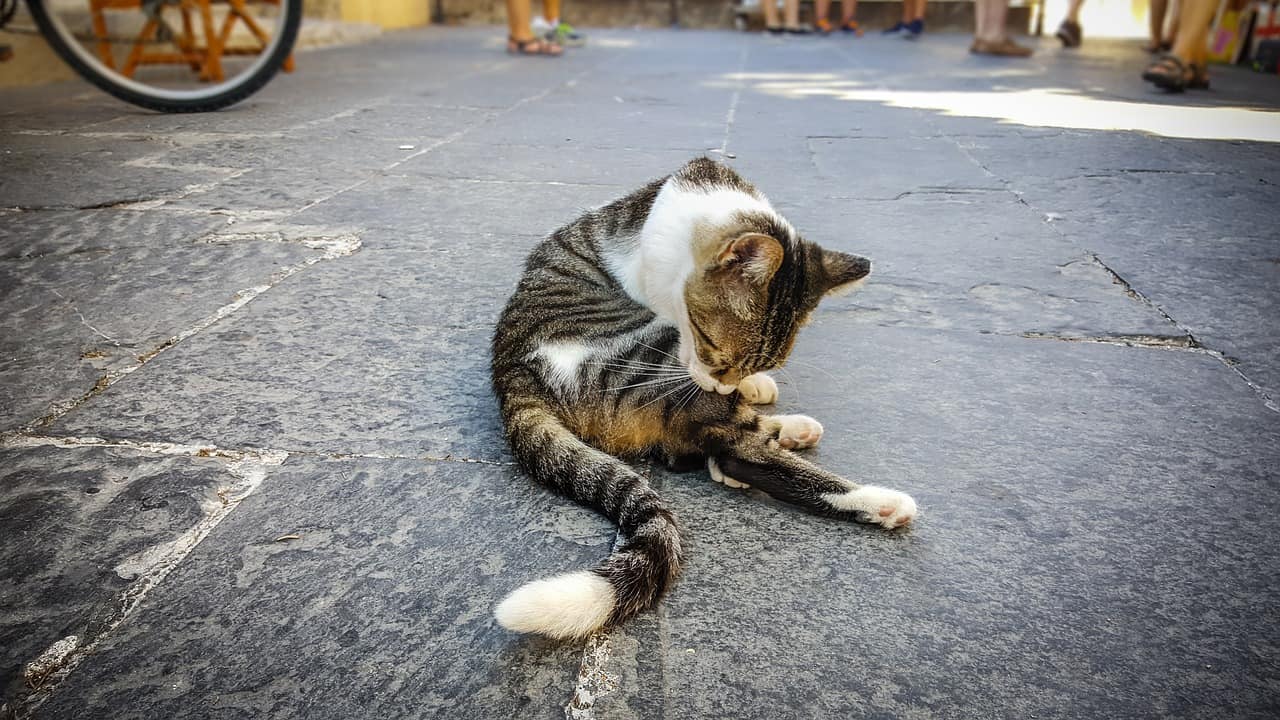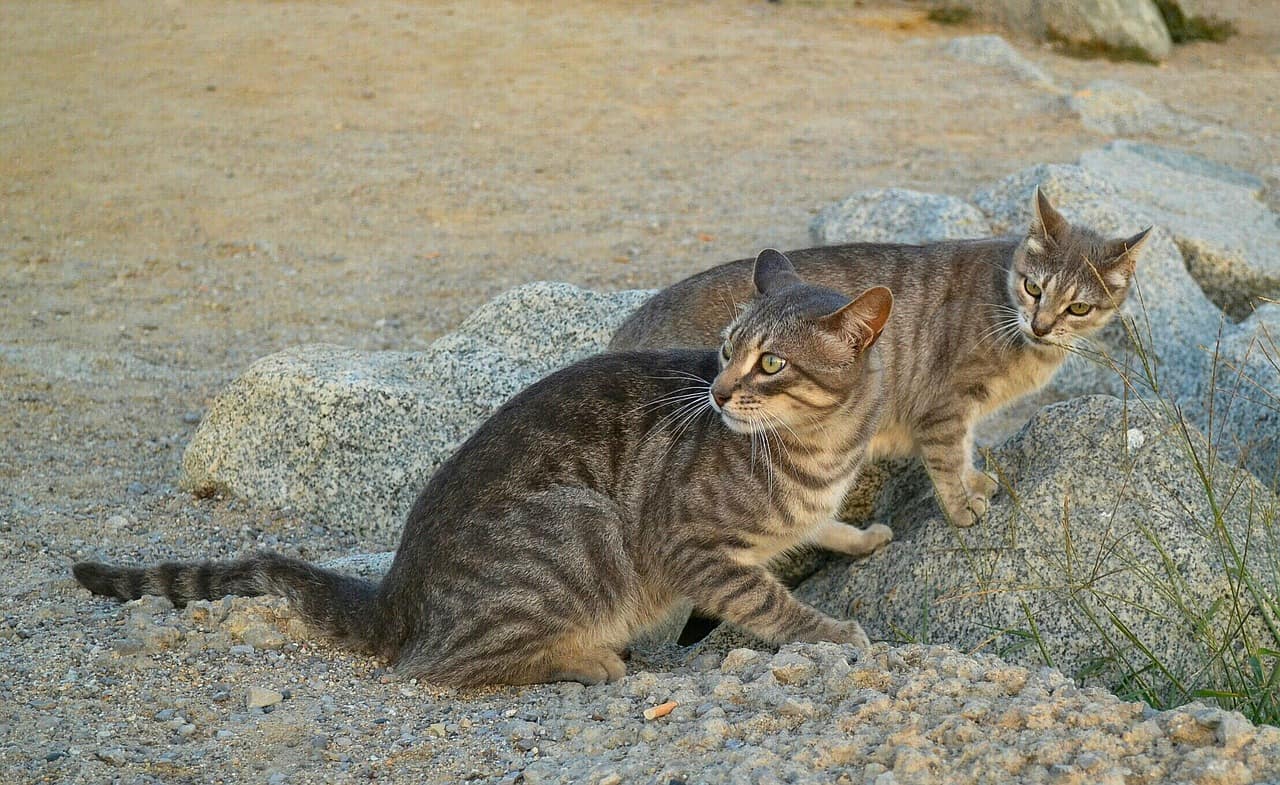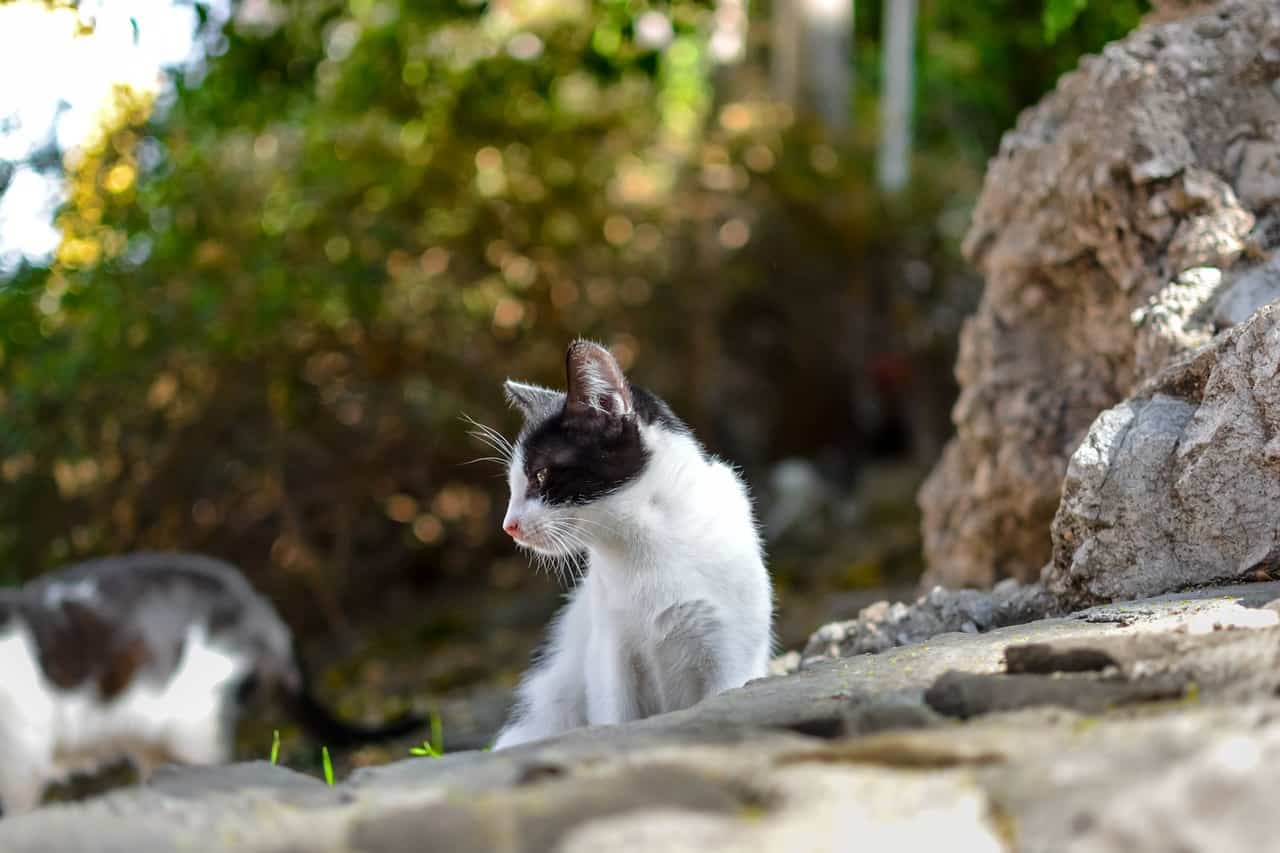Table of Contents

Unfortunately, not all cats have homes where they are loved and looked after. Sadly, thousands of cats are living on the streets, and they have to fend for themselves. The majority of these cats are terrified of humans, and tend to keep their distance, even from people who are feeding and trying to help them. These are known as feral cats. But what is a feral cat?
They are not socialized, and they often can be found living in colonies. These colonies may contain not only feral cats, but cats that have run away or former pets that have been abandoned. Feral cats and strays are often called “community cats” or “free-roaming cats.”
One thing that many people do not understand is that even though feral cats do not live inside homes and they are outside dwellers, they are not wildlife. They need food from human sources to survive. This can be anything from scraps they find in dumpsters to food left by a kind human who doesn’t want to see the feral cats go hungry.
Contrary to popular belief, these cats do not survive because they have great hunting skills. They need us to provide them with at least some of their sustenance. There are also feral rescue groups that will neuter feral cats and then release them, after tipping their ears for identification (cutting the tip off the ear so you know it is a feral that has been neutered).
What Does Feral Mean?

Many people think that a feral cat is born that way. This is not the case. Being feral is a behavioral characteristic, and has nothing to do with anything biological. For instance, a kitten could be born into a feral colony, but if it is taken indoors while still a kitten and socialized, it can be turned into a friendly and loving cat. Another example of this being behavioral is an adult cat that has become a stray. It may have once been a friendly pet, but experiences and its situation have made it fearful of humans. The level of feral can vary from cat to cat.
There are four factors that determine how feral a cat actually is:
Age
A kitten that is younger than eight weeks old and born to a feral mother can generally be socialized pretty quickly. In fact, with a kitten this young, it may only take a few days before they are enjoying human attention. Keep in mind that the older the kitten, the more difficult it is going to be to socialize them. Once the kitten is four months, it is going to likely have adopted a number of feral characteristics, and they will have these characteristics for life. It can take as long as a year, or even longer, to socialize an adult feral cat.
Feral Generations
Even though this is a behavioral trait, if there are many generations of cats that are feral, each generation is going to be more feral than the last. They are going to get wilder and wilder, and the level of feral is going to increase from generation to generation. With each successive generation, they are going to be more and more feral, until there is likely no way to be able to tame them and turn them into family pets.
Human Contact
As mentioned earlier, feral cats have different levels of feral. Some will run from humans, while others will tolerate some human contact. There are some feral cats that do interact with humans, and they will show a higher level of socialization than other cats that have little to no human contact.
Personality
Like people, each cat has its own unique personality. There are some feral cats that are naturally friendly, and that will allow humans to give them a bit of attention. Then, there are others who will run like lightning at the sight of a human. Feral cats that do allow some human contact are often those that are cared for by rescue groups such as Carma, and they can even be turned into loving pets with a lot of hard work and patience, especially once they have been spayed or neutered.
Taming a Feral Cat

While not all feral cats can be tamed, there are hundreds of success stories from people who have rescued feral cats and turned them into their pets. The thing is, taming a feral cat is not something that is going to happen overnight. You have to work with each cat’s personality, and never try to force them to do anything they do not want to do. For instance, you should never try and force a feral cat to live indoors as a pet, or keep one in a cage. This is just going to cause a lot of emotional distress for the cat, and it is unlikely that it will ever allow human contact.
Here’s a short video to help you learn more about feral cats and their difference from stray cats:
You have to take things slow and easy. Start out by leaving food outside for the cat, in the same place every day. Talk to the cat, without trying to approach it at first.
Let the cat get used to your presence, and the sound of your voice. The more the cat gets used to you, the less afraid it is going to be. If you are lucky, over time, the feral cat may start coming to you to be petted and fed, and after a while, you can bring it indoors and give it the home it truly deserves.
Note that you can try to identify what the cat’s breed is. It could help you figure out the personality it has, adjust to it and win its trust.
Conclusion
It is sad that every cat in the world can’t have a loving home, and that thousands have to make their own way in this world. But, you can do your part. If there are feral cat care and rescue organizations in your area, ask about volunteering. You can also help by building simple shelters that the cats can use to get out of bad weather. There are instructions online you can use to create shelters out of plastic totes. Any little thing you can do is going to make a huge difference in the lives of the feral cats in your community.